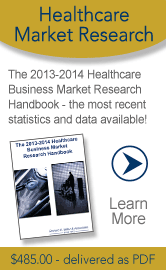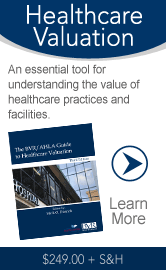 |
 |
Issue #17-1 | October 10, 2013

Hospital hit with huge fine over lucrative physician payIf a hospital pays physicians more than fair market value compensation, it could face huge penalties for making illegal kickbacks to physicians. A recent jury award illustrates this trouble spot. Big penalty: The District Court of South Carolina has just ordered a hospital to pay $237 million for violating the False Claims Act. Earlier this year, a jury found the hospital guilty under the Stark Law and False Claims Act of providing illegal kickbacks to a group of local doctors under part-time employment contracts that the government said paid well above fair market value. Although the deals made no mention of referral fees, the government argued that the excess amount was paid to ensure that they would continue to get those fees for the clinical procedures. The hospital argued that it had both legal and fair market value opinions that backed up the appropriateness of the employment agreements. However, the jury disagreed. The case is U.S. ex rel. Drakeford v. Tuomey Healthcare Systems, Inc., C/A No. 3:05-2858-MBS (D. S.C.). The hospital, a nonprofit, single hospital system based in South Carolina, plans to appeal the court’s judgment. The hospital’s Form 990 for 2011 showed net assets of $124 million, so a judgment amount of $237 million is devastating. What to do: Any opinion on the valuation of a physician compensation arrangement cannot in any way be based on any consideration of anticipated referrals. Before any arrangement is put into place, the fair market value and commercial reasonableness should be established. Also, benefits provided under these arrangements should be consistent with those provided to other hospital employees. If part of the compensation is for administrative duties, the arrangement should clearly describe those duties. What’s more, if arrangements are long term, they should be reviewed periodically for compliance. Physician referrals can be part of a number of business dealings with physicians, including acquisitions of practices, joint ventures, noncompete agreements, and so on. Regulatory matters, including the Stark Law, and how they impact the valuation of healthcare compensation are fully examined in the BVR/AHLA Guide to Healthcare Industry Compensation and Valuation. More hospitals using Stark self-disclosure to sidestep big penaltiesThe popularity of the Stark law self-referral disclosure protocol (SRDP) is increasing as more hospitals are using this program to avoid huge penalties. The SRDP, which was authorized by the Affordable Care Act (ACA), offers healthcare providers and suppliers the chance to disclose and resolve actual or potential violations of the Stark law. CMS can reduce the amount owed as a result of violations and can suspend the 60-day deadline for the reporting and return of overpayments. CMS has received 82 Stark self-disclosures so far this year and will probably end up getting more than 100 for 2013, according to CMS's Joseph Hudzik as reported in a Bloomberg BNA blog. Since the SRDP was posted to the CMS website in September 2010, CMS has received 322 Stark self-disclosures, and the agency has settled 37 of them, collecting roughly $3.9 million. After a settlement, however, a healthcare provider still may face civil monetary penalty or False Claims Act liability. Corporate wellness programs may boost stock price Healthcare providers that market wellness programs to large companies now have another selling point: the positive relationship between employee healthcare quality and stock price. Stock wellness: A new study in the September 2013 issue of the Journal of Occupational & Environmental Medicine is a groundbreaking attempt at establishing a link between the quality of a company’s healthcare programs and movement in its stock price. Although the scope of the study was such that it could not prove a cause-and-effect relationship, it does show a strong correlation. As part of the study, researchers constructed four hypothetical stock portfolios populated with public companies that have won the Corporate Health Achievement Award (CHAA) of the American College of Occupational and Environmental Medicine (ACOEM) since 1997. Healthcare IT outsourcing to soarIn the August 2013 Healthcare Value Wire, we reported on the trend of outsourcing in healthcare and how hospitals are farming out services in building operations, maintenance, facilities management, food, janitorial, and other areas. One area gaining a lot of steam in healthcare outsourcing is information technology. On the rise: The U.S. healthcare IT outsourcing market is expected to grow by 42.8% in the next five years, according to a report by MarketsandMarkets. Many healthcare systems are outsourcing IT services to vendors for help with ICD-10 preparation. Another reason outsourcing in this area is on the rise is the new emphasis on data collection and analysis. With outsourcing, healthcare providers have access, through the outsourcing vendors, to the most up-to-date technology for data collection and analysis without investing capital. The report also lists the major players in the healthcare IT outsourcing market: Accenture Plc. (Ireland), Accretive Health Inc. (U.S.), Allscripts Healthcare Solutions Inc. (U.S.), Anthelio Healthcare Solutions (U.S.), Cognizant Technology Solutions (U.S.), Dell Inc. (U.S.), HCL Technologies (India), Hewlett-Packard Co. (U.S.), International Business Machines (IBM) Corp. (U.S.), Infosys Limited (India), McKesson Corp. (U.S.), Siemens Healthcare (Germany), Tata Consultancy Services Ltd. (India), Wipro Ltd. (India), Xerox Corp. (U.S.), Epic System (U.S.), and Computer Sciences Corp. (U.S.). Consumers flood online exchangesLast week, federal and state health insurance exchanges opened to the public, and the computer glitches began. In just a few days, 7 million Americans visited HealthCare.gov to learn about their options, according to a report in the Washington Post. IT experts were working around the clock to expand system capacity to handle the volume. Some state exchanges have also experienced computer glitches and site malfunctions as customers overwhelmed the sites. This is evidence of the intense interest there is in signing up—especially since the cut-off date to enroll for coverage beginning January 1 is over two months away. Revenue boost? Based on the notion that 32 million people will gain access to health insurance soon, it would appear on the surface that healthcare providers would find this beneficial to their bottom lines. However, some providers feel that there will be a surplus of patients and lower reimbursements. Also, while more people will have coverage, they might face challenges when it comes to finding a doctor who will see them. There is already a national shortage of doctors, according to the Association of American Medical Colleges. And the situation is expected to get worse as nearly half the nation's physicians are over age 50, which means many are at or near retirement age. And we’re also facing a nursing shortage, according to the American Medical Association. ACOs face barriers to widespread usage Since health reform, many accountable care organizations (ACOs) have been established by public and private payers. However, their distribution is uneven, according to a new study by the Commonwealth Fund. All about location: ACOs are more likely to be located in regions with high Medicare costs that performed well on selected quality-of-care measures. They are also found in regions with larger physician group practices and greater prevalence of managed care plans. On the flip side, ACOs are less likely to be found in rural areas and regions with higher poverty rates. This could be because of the difficulty of making the capital investments necessary and the worry about taking on the financial risk of a shared-savings model and meeting cost and quality benchmarks. The study concludes: “Although the ACO model holds promise in reducing costs and improving the quality of care, there are barriers to wider implementation. Policymakers might consider launching Medicaid demonstration ACOs, offering start-up financing, or designing other programs that motivate providers in rural and high-poverty areas to form accountable care groups.” ACO Guide: HIN's Essential Guide to Accountable Care Organizations (available from BVR) answers key questions so that hospitals, PHOs, IPAs, and other physician organizations, networks, or group practices can assess market position and readiness for the ACO model and move quickly to improve profitability and market share. Valuation of marijuana dispensaries in a time of controversy On October 24, expert appraisers Jim Marty (Jim Marty and Associates) and Ron Seigneur (Seigneur Gustafson) will address one of the hottest, most politically contentious areas of healthcare in America today: marijuana. In their webinar, Valuing Marijuana Dispensaries, the Colorado-based Marty and Seigneur will address how to appraise businesses operating in a newly legalized marketplace. They will also discuss the key factors involved when dealing with the complex intersection of federal and local laws that govern marijuana usage and distribution. |
|
||||||
1000 SW Broadway, Suite 1200, Portland, OR 97205
(503) 291-7963 | editor@bvhealthcarenews.com
www.BVResources.com/healthcare

